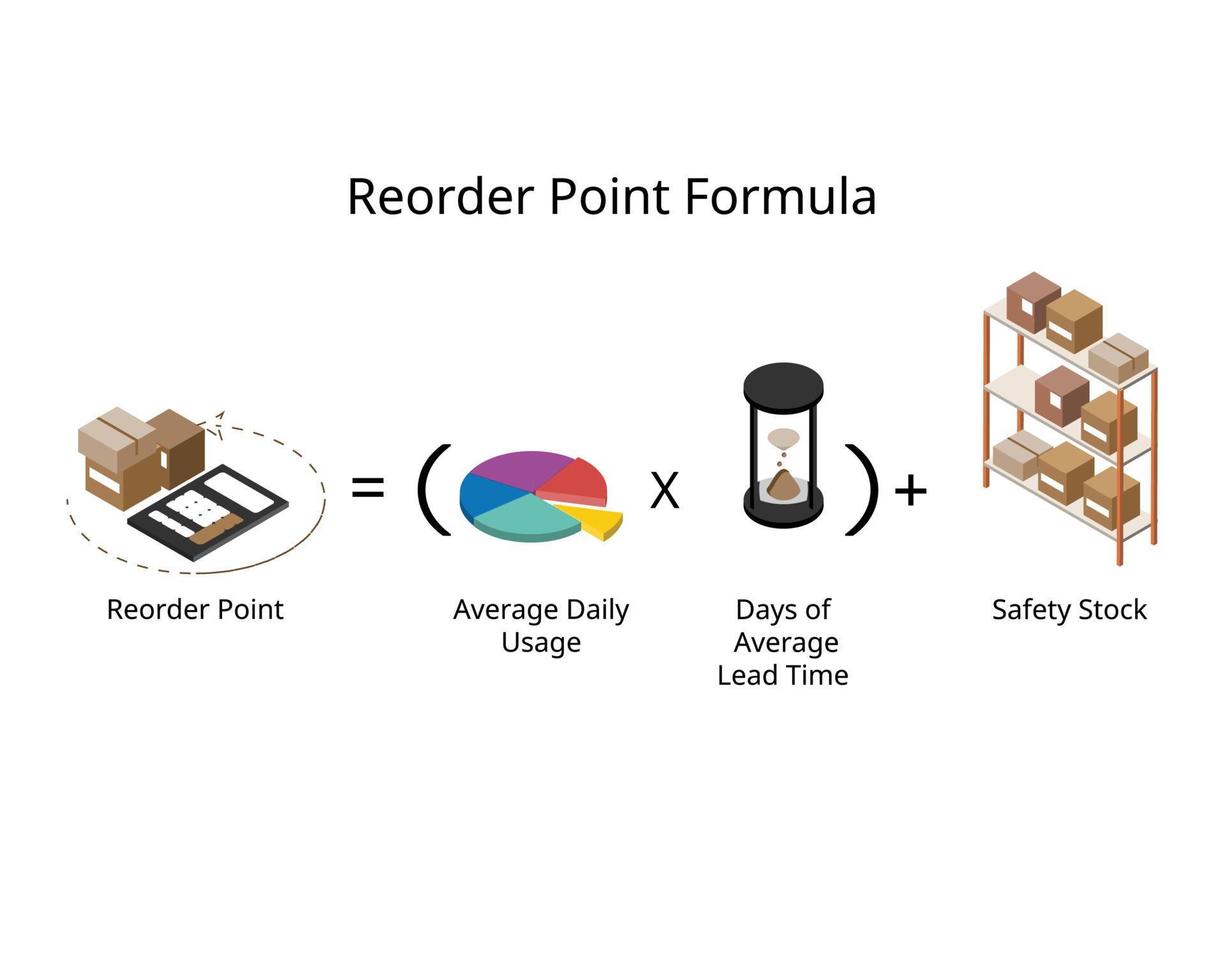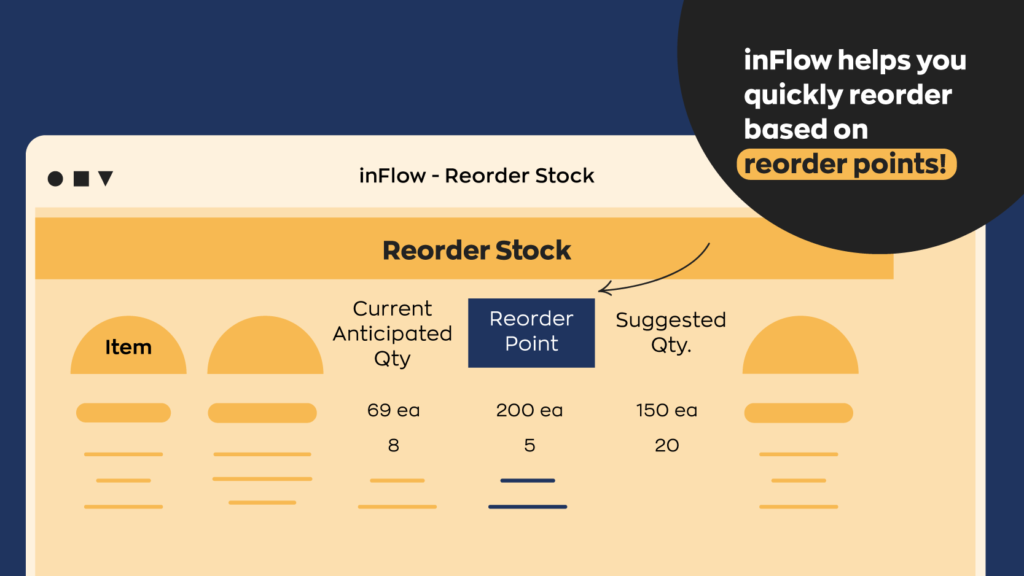
“Setting a reorder point is a simple but effective way to keep inventory at a safe level. With a carefully determined reorder point, retailers can not only lower the risk of stockout, but also reduce inventory holding costs,” Miao says. Calculating reorder points goes hand in hand with having a clear idea of purchasing trends over a given time period. You should look into customer demand so you can understand when customers are more likely to purchase your products and you can forecast demand correctly. For example, if you sell sunglasses, you’re likely to see a peak in demand in the spring and summer, opposed to a ski goggles brand that will see a surge in demand in the fall and winter. Having visibility into your inventory and set reorder points helps you know when to replenish inventory to prevent stockouts before it’s too late.
Calculating Reorder point and Safety stock
For items or sub-assemblies that are manufactured in-house, lead time is referred to as factory or production lead time. It can be time-consuming and challenging to calculate and manage the reorder point for each product, especially if your stock is managed across several spreadsheets. Use inventory management software like Unleashed to help you reliably manage stock and place reorders quickly. You can compare the average daily unit sales across different accounting periods or compare it to other inventory reporting metrics to see how well your business is performing.
Reorder point formula FAQs

If you order when you have zero stock on hand, you’ll be unable to make sales for as long as it takes to receive the order. The your vendor takes to supply the items, the more sales you’ll be losing. Setting a reorder point helps you optimize your inventory, replenish your stock of individual items at the right time, and meet your market demand without going out of stock. Implementing the reorder level is crucial for preventing overstocking and stock-outs, maintaining efficient operations, consistently meeting customer demand, and managing storage costs effectively. Consider an eCommerce business selling 20 units of face serum daily with a lead time of 14 days and a safety stock of 50 units.
Ultimate WMS Requirements Guide: How to Choose the Best Ecommerce WMS
- In the realm of merchandise management, the term “reorder level” might sound technical, but its essence is straightforward.
- If the delivery of an item is delayed or the consumption rate increases rapidly and unpredictably for any reason, the safety stock will cover the shortage of items.
- Adjust safety stock dynamically to anticipate seasonal demand changes, increasing it before peak seasons and reducing it during off-peak periods.
- It’s easy to calculate — take how many items you’ve sold in a given time period and divide it by the chosen time period.
- While you might not notice it much at first, regularly storing more products in your warehouse that are required can lead to significant – and unnecessary – storage costs.
Segment inventory items based on value, criticality, and demand variability, applying different reorder strategies to each category for more efficient management. Collaborative planning is essential; involve multiple departments like sales, marketing, and production to ensure a comprehensive understanding of factors affecting inventory needs. Finally, establish a schedule for regularly reviewing and adjusting reorder levels, with the frequency based on the product and market dynamics.
Do you already work with a financial advisor?
Safety stock is the amount of extra inventory you keep just in case you don’t receive a new shipment within the specified lead time. For example, if your ROP for a certain chair is 15, you should order more chairs from your supplier when you have only 15 left in stock. Your ROP will be greater than your EOQ if you’re bulking up on safety stock. You may experience this prior to holiday sales or periods of seasonal demand. When the reorder point is reached, a new order of product is necessary to avoid stockouts, depending on seasonality and forecast demand. Imagine you have a dog accessory business that sells bandanas in different colors .
Effective management of reorder levels involves several advanced strategies. Utilise advanced forecasting techniques that account for seasonality and trends, incorporating both historical data and forward-looking indicators. Adjust safety stock dynamically to anticipate seasonal demand changes, increasing it before peak seasons and reducing it during off-peak periods. Collaborate with suppliers to manage lead times during peak seasons, and consider alternative suppliers or expedited shipping for critical periods.
Secondly, you need to know the average daily usage – which is how much of the product you’re using. In the above graph, the maximum level is the sum of the safety stock and the order quantity, or 3400 bottles. Once the stock left in your inventory reaches the reorder level of 2400 bottles units, you should place a new purchase order with your vendor. The minimum level, which is 1400 bottles, will help you fulfill your orders until your ordered stock reaches the warehouse.
Safety Stock is extra inventory to cushion against demand variability and supply issues, such as unexpected demand spikes, supplier delays, and quality problems. Balancing safety stock is essential to avoid high holding costs while preventing stock-outs. The infographics of stock is the fixed stock level that lies between the maximum and minimum stock levels. At the reorder stock level, an order for the replenishment of stock should be placed.
